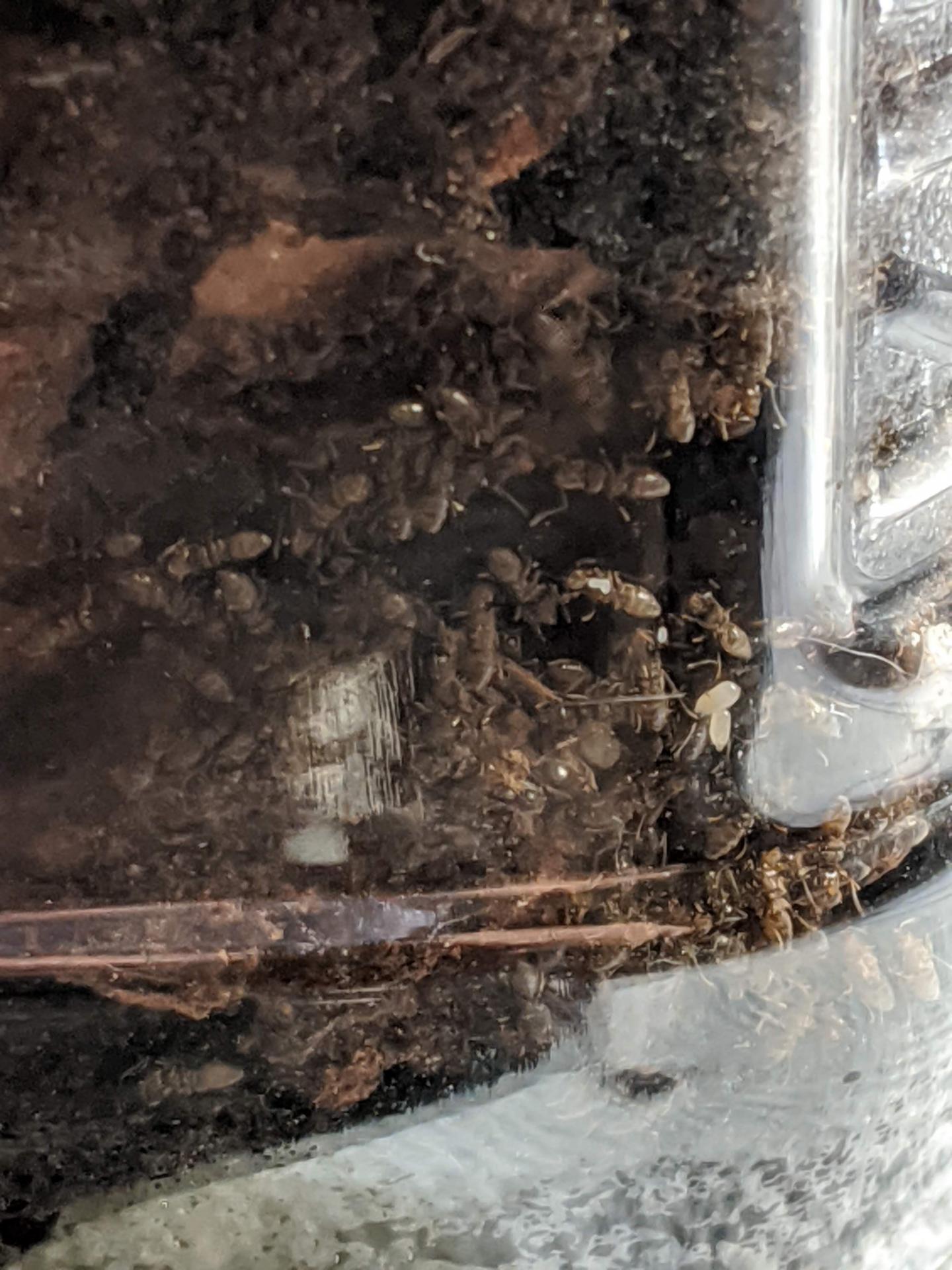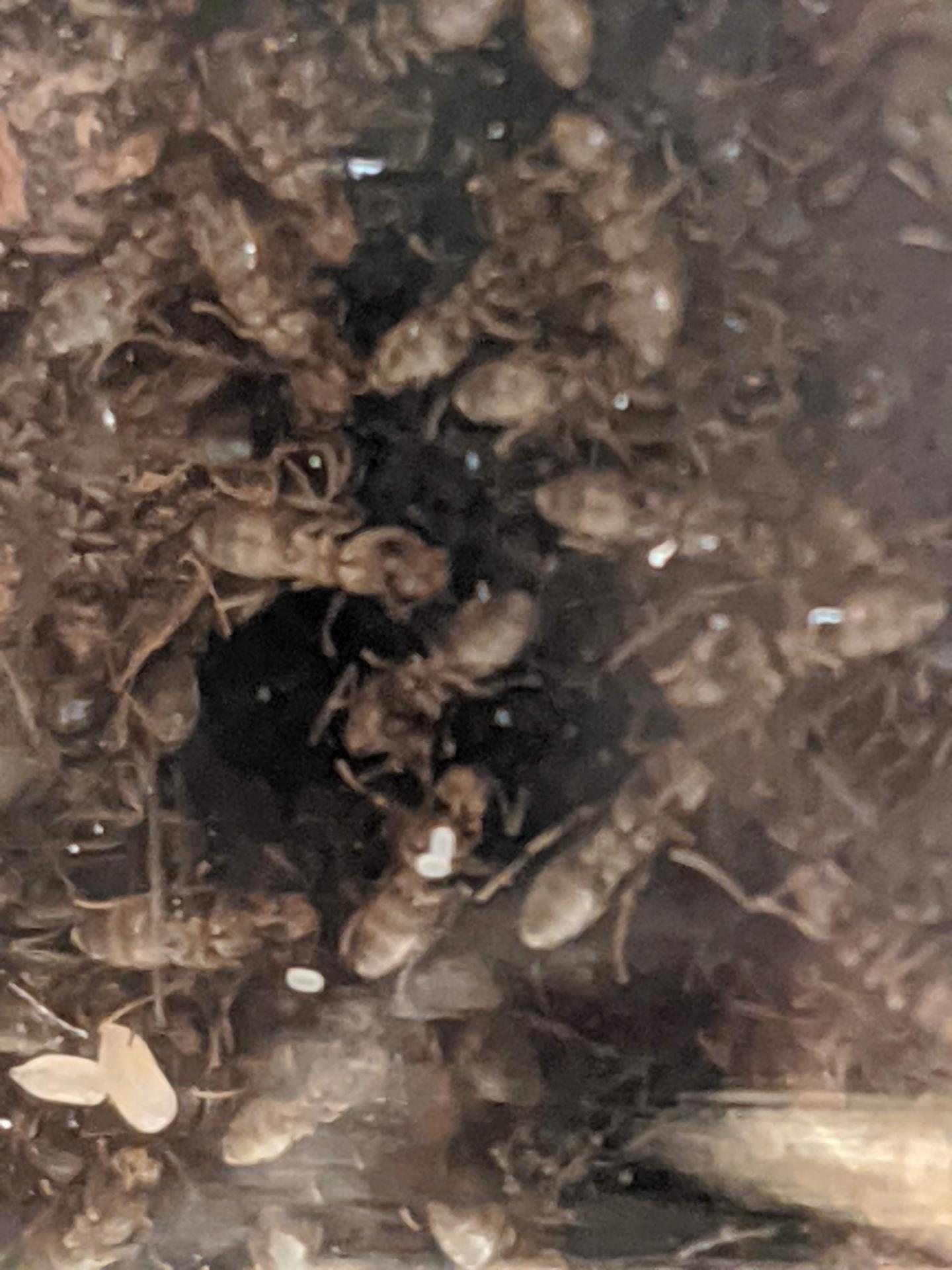1. Location (on a map) of collection: Lancaster, PA
2. Date of collection: April 29
3. Habitat of collection:
They have infested my house, and I found a colony that was nesting inside an orchid pot. The potting medium was generic orchid mix from the hardware store, mostly bark. It was pretty dry and overdue for water when I found them.
This is not the only colony of them in the house; I'm still finding them elsewhere. The others must live in my walls; I have seen them come through the sockets.
4. Length (from head to gaster): workers are 4mm.
5. Color, hue, pattern and texture: Dark brown/Black. I have seen a few larger ants which I assume to be queens (plural) who are a bit more reddish, but I cannot find any to measure right now.
6. Distinguishing characteristics: unknown.
7. Distinguishing behavior: Hand out in large groups in a large (to them) cavern. Seem to keep moving the food in and out of there, but that may be because I peek on them too often.
In my house. I have observed them eating jelly beans, marshmallows, and cat food.
8. Nest description: They liked my dry orchid pots. My quick "formicarium" is a layer of orchid mix with dirt on top. They dug through the dirt and mostly congregate in the drier, larger caverns made by the orchid bark.
9. Nuptial flight time and date: unknown. This is a full colony with hundreds of ants already. I think I have seen multiple queens. I am reasonably sure there is at least 1 queen, because there are definitely eggs.
Getting pictures was a challenge, but I hope they provide some insight. I am entirely new to ants, but have extensive experience with fish, small mammals and amphibians (I am currently breeding axolotls). A ready-made colony seemed too great an opportunity to pass up, especially since I was going to have to kill them otherwise.
Edited by tjasko, May 7 2020 - 8:20 PM.



















